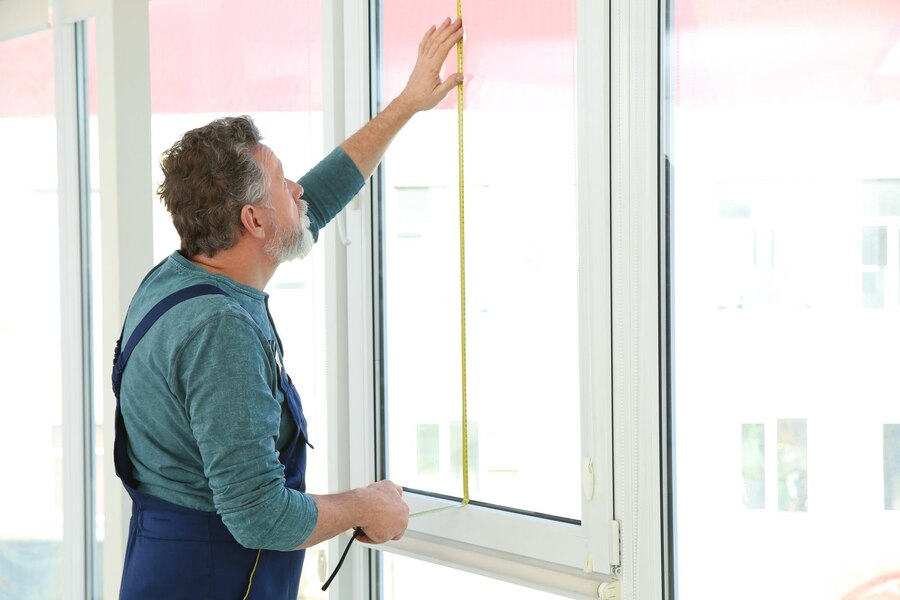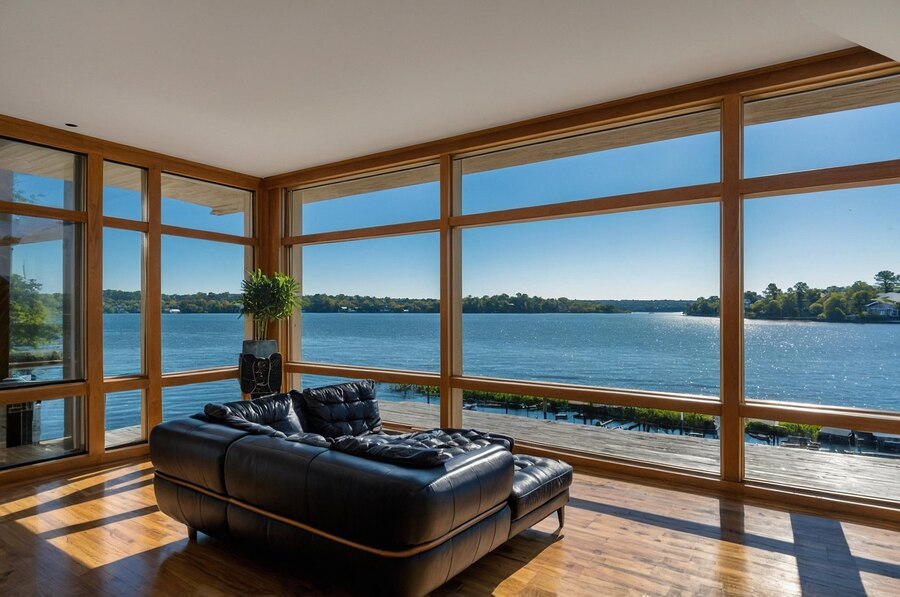
Selecting Replacement Windows for Any Climate Zone
Choosing replacement windows for your home isn’t just about aesthetics; it’s crucial to consider your climate zone. In colder areas, look for windows with high insulation values to keep your home warm, while warmer climates benefit from windows that block UV rays and heat. Consider double or triple glazing for better energy efficiency, regardless of where you live. Don’t forget to explore various frame materials—wood, vinyl, and fiberglass all have different benefits. Ultimately, the right windows can enhance your comfort and reduce energy bills throughout the year.
Understanding Climate Zones
Climate zones play a significant role in determining the best type of replacement windows for your home. These zones range from tropical to arid, temperate to cold, each with distinct temperature variations and weather patterns. Understanding your specific climate zone will help you choose windows that can withstand the elements, enhance energy efficiency, and improve comfort. For instance, homes in colder regions need windows that minimize heat loss, while those in hotter areas should prioritize UV protection and heat rejection. A solid grasp of your climate zone sets the foundation for making informed choices.

Types of Climate Zones
Climate zones can be broadly categorized into tropical, arid, temperate, and cold regions. Each zone presents unique challenges for homeowners regarding temperature fluctuations and weather patterns. For instance, tropical areas face humidity and intense heat, while cold climates experience snow and freezing temperatures. Recognizing the specific characteristics of your climate zone will guide your window selection process, ensuring you choose options tailored to your local conditions for optimal performance.
Cold Climate Considerations
In cold climates, selecting replacement windows that minimize heat loss is essential. Look for windows with a low U-factor, which indicates better insulation properties. Double or triple-glazed windows with gas fills can also enhance thermal performance. Additionally, consider low-emissivity (Low-E) coatings to reduce heat transfer while allowing sunlight in. These features work together to keep your home warm and cozy, reducing heating costs during the colder months.
Hot Climate Solutions
For homes in hot climates, windows that provide effective UV protection and heat rejection are crucial. Look for options with a low Solar Heat Gain Coefficient (SHGC), which limits the amount of solar heat entering your home. Tinted or reflective glass can also help mitigate heat while maintaining natural light. By prioritizing these features, you can keep your home cooler and reduce reliance on air conditioning, leading to lower energy bills.
Humidity and Moisture Considerations
In areas with high humidity, it’s important to choose windows that can withstand moisture and prevent mold growth. Vinyl and fiberglass frames are excellent choices, as they resist rot and corrosion. Additionally, windows with good sealing and drainage systems help prevent water infiltration. Selecting materials designed to handle humidity not only prolongs the life of your windows but also ensures a healthier indoor environment, free from moisture-related issues.
Long-Term Benefits of Climate-Specific Windows
Investing in climate-specific windows can yield significant long-term benefits. By selecting windows tailored to your region, you enhance your home’s energy efficiency and comfort, ultimately leading to lower utility bills. Additionally, properly chosen windows can increase your property’s value and curb appeal. Understanding the importance of your climate zone allows you to make informed decisions, ensuring your investment pays off both in savings and improved living conditions.
The Importance of Energy Efficiency
When selecting replacement windows, energy efficiency is a crucial factor to consider. Energy-efficient windows help reduce heating and cooling costs by minimizing heat transfer, which is especially important in extreme climates. Look for windows that carry the ENERGY STAR label, as they meet strict energy efficiency guidelines. Features like low-emissivity (Low-E) glass, argon gas fills, and high insulation values contribute to a window’s energy performance. By investing in energy-efficient windows, you not only save money in the long run but also contribute to a more sustainable environment by lowering your overall carbon footprint.
Window Frame Materials Explained
The frame material of your replacement windows can significantly impact durability, maintenance, and energy efficiency. Common materials include wood, vinyl, fiberglass, and aluminum, each with its advantages and disadvantages. Wood offers a classic look and excellent insulation but requires regular maintenance. Vinyl is affordable and low-maintenance but may not have the same aesthetic appeal. Fiberglass is incredibly durable and energy-efficient, while aluminum is lightweight and resistant to the elements but can conduct heat. Understanding the pros and cons of each material will help you choose the right option for your home and climate.
Glazing Options for Enhanced Performance
Glazing options play a vital role in the performance of replacement windows, especially concerning insulation and energy efficiency. Double or triple glazing provides better thermal insulation compared to single-pane windows. Low-emissivity (Low-E) coatings on the glass can reduce UV rays while enhancing heat retention or rejection. Additionally, gas fills like argon or krypton between panes can further improve thermal performance. By selecting the right glazing, you can significantly enhance your windows’ energy efficiency, leading to a more comfortable home and lower utility bills throughout the year.
Understanding U-Factor and Solar Heat Gain Coefficient
When evaluating replacement windows, understanding the U-factor and solar heat gain coefficient (SHGC) is essential. The U-factor measures the window’s insulation capabilities, with lower values indicating better insulation. In contrast, the SHGC measures how much solar heat is transmitted through the window, with lower values being preferable in hot climates. Balancing these two factors based on your climate zone can maximize energy efficiency and comfort. A window with a low U-factor and appropriate SHGC can keep your home warm in winter while minimizing heat gain in summer, ensuring year-round comfort.
Aesthetics vs. Functionality
Choosing replacement windows involves balancing aesthetics and functionality. While the appearance of your windows is important for curb appeal, functionality cannot be overlooked. Consider how different styles—such as casement, double-hung, or sliding windows—will fit your home’s design and your practical needs. Additionally, color and finish can enhance your home’s visual appeal while still providing the energy efficiency you desire. Ultimately, finding windows that complement your home’s architecture while performing well in your climate zone will ensure you achieve both style and comfort.
Cost Considerations and Budgeting
Budgeting for replacement windows requires careful consideration of both upfront costs and long-term savings. While high-quality, energy-efficient windows may come with a higher initial price tag, they often result in significant savings on energy bills over time. Additionally, consider installation costs and potential rebates or incentives for energy-efficient upgrades. Assess your long-term goals: are you looking to increase your home’s value, improve comfort, or reduce energy consumption? Setting a clear budget and understanding the potential return on investment will guide your decision-making process as you select the best replacement windows for your home.
Choosing a Professional Installer
Selecting a professional installer is crucial for ensuring the longevity and performance of your replacement windows. A skilled installer will ensure that the windows are fitted correctly, enhancing energy efficiency and minimizing the risk of air leaks or moisture intrusion. Research local contractors, read reviews, and ask for recommendations from friends or family to find a trustworthy installer. Always check for licenses and insurance, and don’t hesitate to ask for references or examples of previous work. Investing in a reputable installer will pay off in the long run, giving you peace of mind and a high-quality finish for your window replacement project.
- Correct Installation: A skilled installer ensures windows are fitted properly, enhancing energy efficiency and preventing air leaks or moisture issues.
- Research and Reviews: Take the time to research local contractors, read customer reviews, and seek recommendations from friends or family to find a reliable installer.
- Verify Credentials: Always check that the installer has the necessary licenses and insurance to protect yourself and your investment.
- Request References: Don’t hesitate to ask for references or examples of previous work to gauge the installer’s experience and quality of workmanship.
- Long-Term Investment: Choosing a reputable installer not only ensures a high-quality finish but also provides peace of mind and contributes to the longevity and performance of your new windows.
Conclusion
Selecting the right replacement windows is crucial for enhancing your home’s energy efficiency and comfort, regardless of your climate zone. At EZ Window Solutions of Strongsville, we understand the unique challenges each climate presents. By choosing high-quality materials and energy-efficient designs, you can ensure your windows withstand the elements while reducing energy costs.
If you’re ready to upgrade your home with the best replacement windows tailored for your specific climate needs, our team is here to help. With our expertise and commitment to customer satisfaction, we’ll guide you through the selection process, ensuring you make the best choice for your Strongsville home.
















Recent Comments